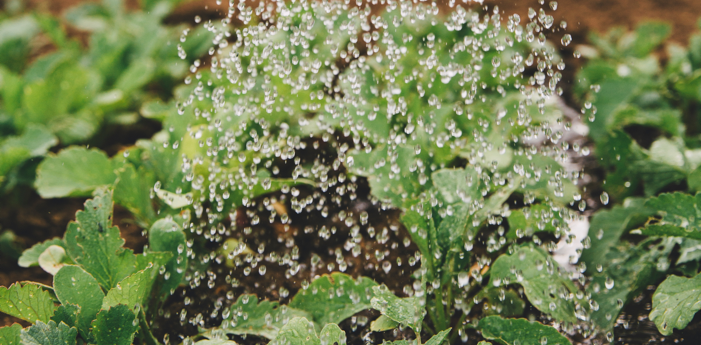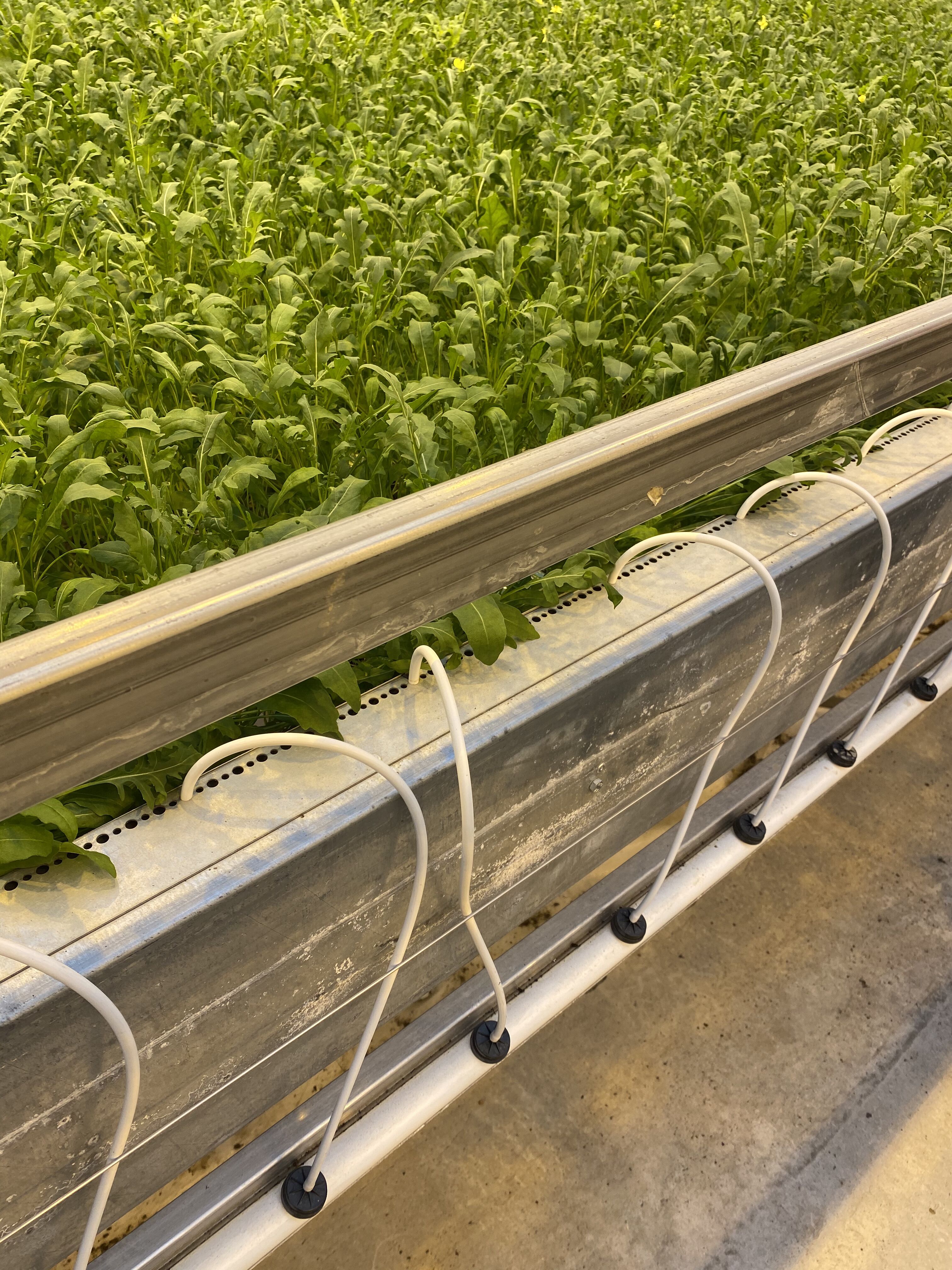
In a properly designed drip irrigation system, every water droplet serves its purpose. The exact quantity of water and nutrients necessary for the healthy growth of plants is supplied at just the right frequency and volume, guaranteeing a quality harvest without any excess expenditure.
In many climates inside a glass greenhouse during sunny seasons, the conditions can resemble a desert, with dry and hot temperatures, especially in the absence of a screening system.
Water plays a significant role in the process of assimilation, the transportation of sugars and salts, and also in cooling plants. For example, vegetables are comprised of more than 90% water.
Manual irrigation in farm greenhouses lacks efficiency as it often leads to uneven watering and consumes considerable time.
This is why greenhouse cultivation extensively utilizes automated irrigation systems, with the main ones including:
Drip irrigation
Ebb and flood irrigation
Sprinkling
NFT system
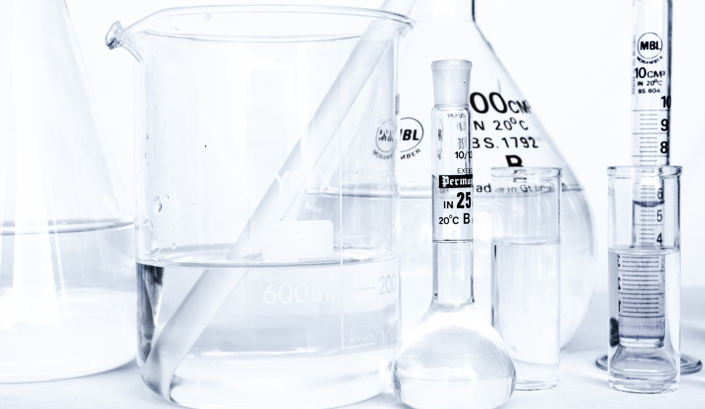
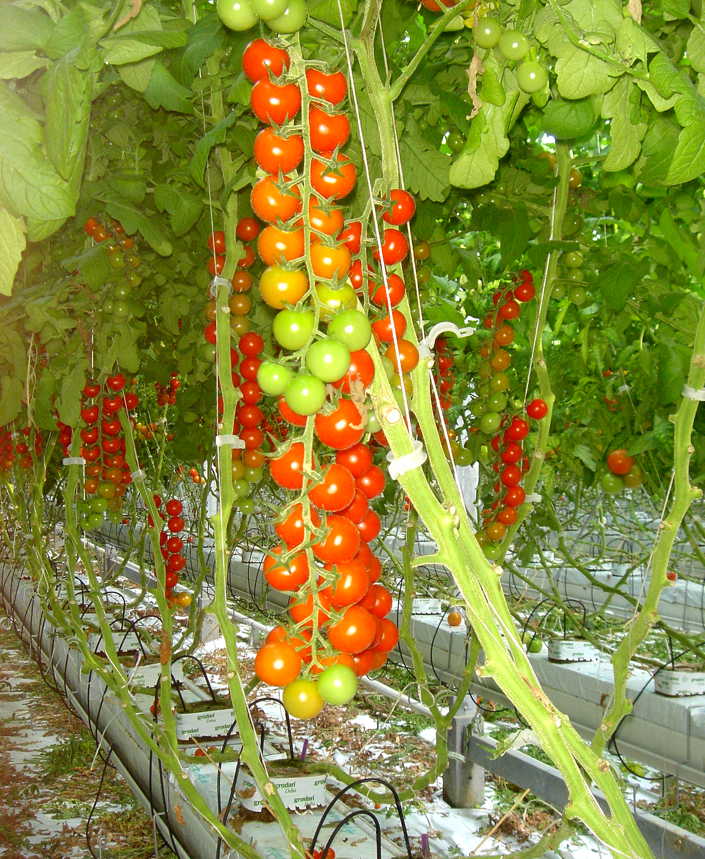
A closer look at the irrigation technology used in greenhouses:
To ensure water supply, steel tanks or reservoirs are used. These tanks consist of a cylindrical framework constructed from galvanized corrugated steel sheets on both sides. Inside the tank, thermal insulation and a black PVC liner are installed.
A cover is positioned atop this tank, made of synthetic material, which promotes adequate air circulation and shields the water from light exposure to prevent mold growth.
The flow of water into the water tanks is managed by an electronically operated valve.
The equipment used to prepare and deliver the irrigation solution to the greenhouse piping network includes:
tanks for stock solution ( A + B, and acid tanks)
mixing unit
irrigation heating
pre-stock solution unit
pump for delivering the solution to the greenhouse
distribution lines with drippers
tanks for collecting and storing drainage water from plants, which is then disinfected and reused for irrigation
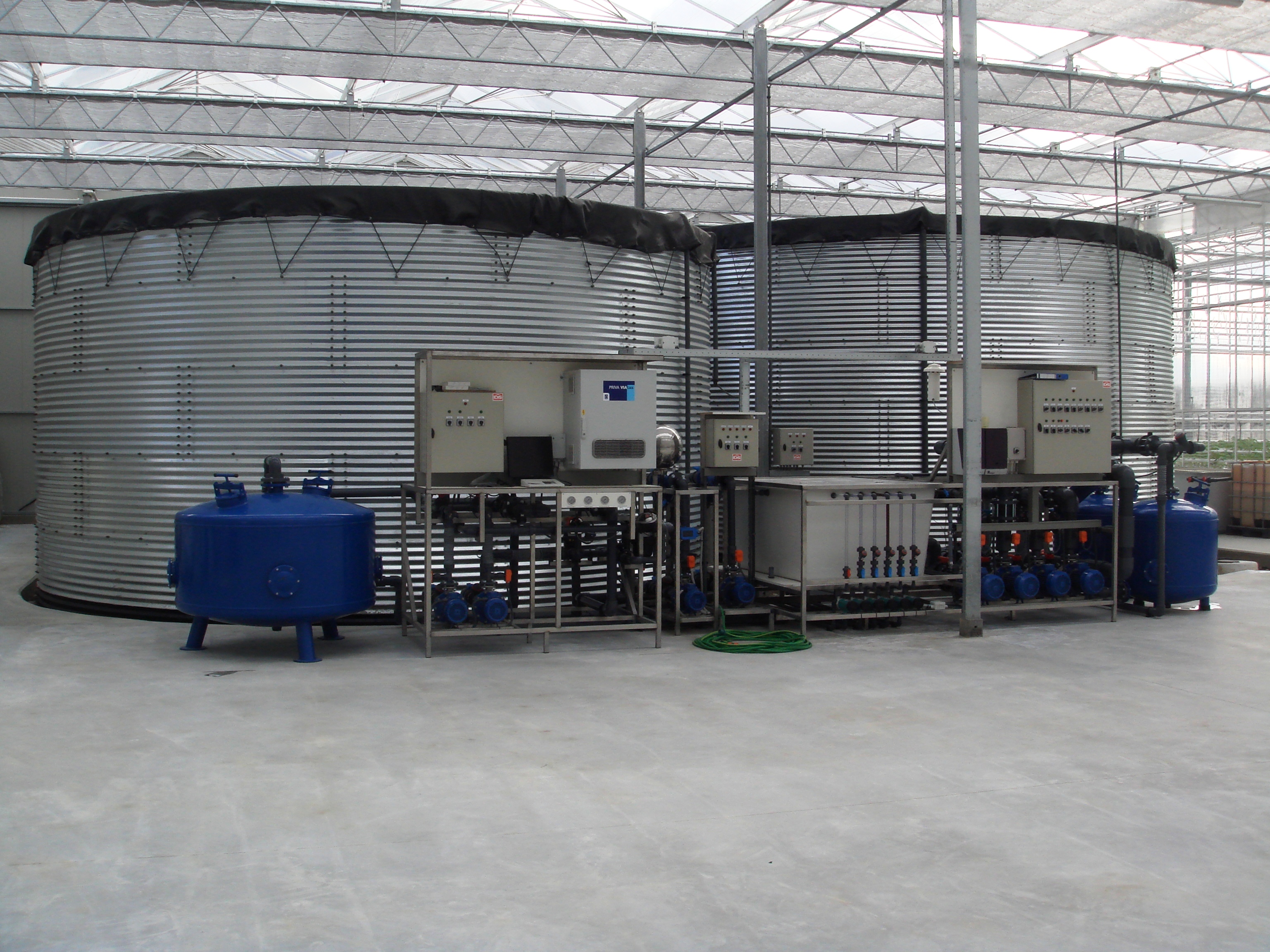
In industrial greenhouses, the irrigation areas are quite extensive, and as such, they are divided into distinct sections that can be irrigated separately. Each irrigation section is remotely managed for 'open-close' operations through electromagnetic valves, following signals from the main computer.
The nutrient solution is delivered to the plants through irrigation lines and drippers. The most effective drippers in this system are compensated drippers.
When compensated drippers are used, the watering of plants is consistently distributed across the entire length of the bed, regardless of its size.
The capacity of drippers can vary, with the most common rates being 2 liters per hour and 3 liters per hour per plant.
At the tip of the dripper, a PVC needle is included, enabling the dripper to be inserted into the substrate.
Ebb and flow system
This irrigation method is used for cultivation on hydroponic tables and concrete surfaces. The idea is to briefly flood the tables or concrete with water, allowing the plants to absorb what they need. Afterward, the excess water is channeled into the drainage system.
In this method, plants are set on trays, within pots, or directly on shelving filled with substrate. The nutrient solution is channeled from the bottom, evenly saturating the plastic shelves, much like a "tidal wave".
After a specific period, any residual nutrient solution is drained away. That's why this system is referred to as ‹‹ebb and flow››.
Given that we typically use retractable hydroponic tables, this system has also been dubbed "flooding tables." So, if you hear terms like "flooding," "ebb and flow," or "flooding tables," know that they all refer to the same system.
Water is supplied for flooding by a submersible pump connected to a timer. When the timer turns the pump off, the water flows back into the container with the nutrient solution.
The system for storing and mixing fertilizers is identical to the one used in drip irrigation.
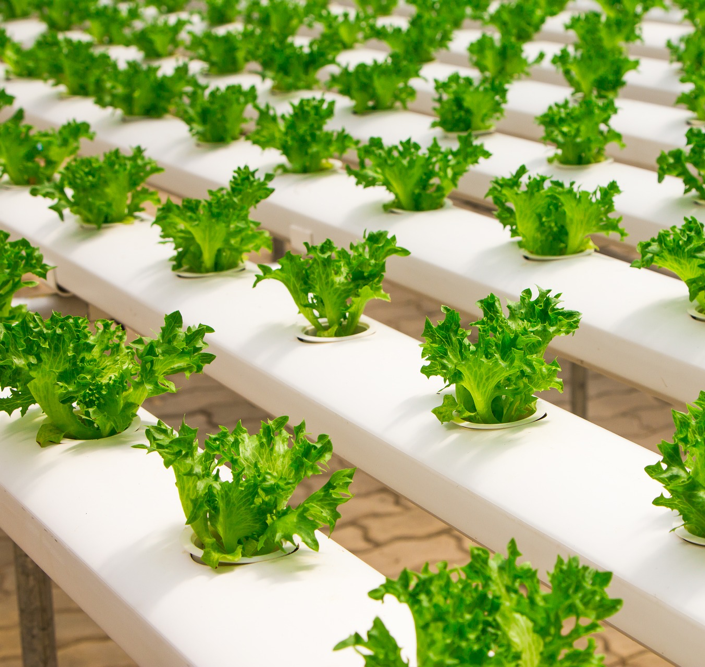
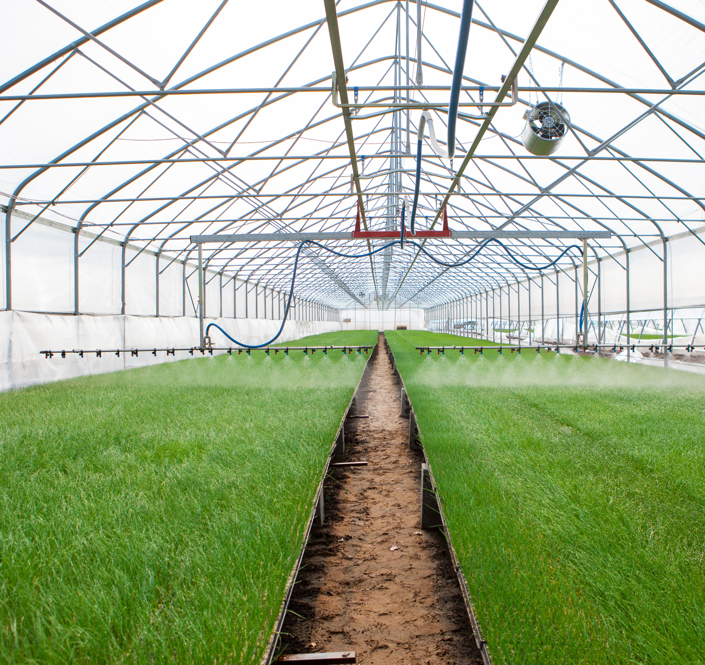
Sprinkling can be used as an irrigation method for different crops and cultivation systems, although it is less prevalent in greenhouses. The primary reasons for this are as follows:
In this form of irrigation, a closed-cycle system is not used, leading to the loss of approximately 30-40% of unused water into the soil and drainage.
he chance of diseases occurring is higher when large droplets land on the leaves of mature plants.
We recommend using overhead irrigation primarily for its most effective purpose: irrigating young seedlings placed on tables, unless the plants are grown in the ground.
>"Closed-cycle" system
A "closed-cycle" system implies that any unabsorbed water from the plants is gathered, treated, and then recycled.
It should be highlighted that the closed-cycle system isn't frequently adopted in agricultural greenhouses because it demands a significant upfront investment. In most scenarios, the drainage water is channeled into the sewer system. Yet, there's the option to recycle and reuse this water if one chooses to.
Following the closed-cycle method, the watering solution that plants don't absorb (known as drainage) travels via underground drainage pipes to a passive drainage collector. It then moves to a drainage storage pit inside the greenhouse. Subsequently, this drainage is channeled to a reservoir designated for unprocessed drainage in the service area.
Within the drip irrigation setup, the drainage gathering system enables the reutilization of 30-40% of the initially provided nutrient solution.
After gathering the drainage, it is subjected to a cleaning and disinfection procedure. Based on the substrate in use and the plants being grown, there are two disinfection methods to consider: heat-based and ultraviolet.
Generally, coconut substrate undergoes thermal disinfection, whereas rockwool is treated with ultraviolet purification.
Thermal disinfection
Thermal disinfection is among the most effective methods for cleaning drainage. It works by heating the drainage water to temperatures between 85-95°C and holding it at this range for up to 180 seconds. Following this, using the recuperation principle, the drainage is cooled to a temperature near its initial level. This extended high-temperature process successfully eliminates 99.9% of harmful bacteria, fungi, and viruses.
The primary method for heating drainage water is through the greenhouse's heating system, rendering the disinfection procedure highly economical. If the desired water temperature isn't reached, an independent electric heater can be fitted to the disinfection device. This heater can either collaborate with the main heating system to offer the needed temperature increment or function autonomously, taking over the entire heating function.
One of the disadvantages of this system is that the elevated temperature fully purifies the water, stripping it of fertilizers. Financially, this translates to a potential loss of 10-15% savings on yearly fertilizer expenses.
Ultraviolet disinfection
Ultraviolet disinfection (often termed "UV disinfection") eliminates all microorganisms in the irrigation water, including fungi, bacteria, and viruses, by breaking down their DNA. For this process, the drainage water flows through a specific lamp that emits UV radiation.
The UV exposure chamber comes with a purification system and a sensor to monitor the intensity of the radiation. This setup guarantees efficient performance and comprehensive water disinfection against bacteria, fungi, and viruses.
UV disinfection greatly boosts the effectiveness of combating diseases, ensures more prudent water usage, and adheres to the ever-tightening hygiene standards for food products. Crucially, it offers a potential reduction of 10-15% in fertilizer costs each year.
Once purified, the disinfected drainage is seamlessly blended with fresh water. From there, it's channeled into a mixer before being redirected to the plants. A portion of the nutrient solution gets taken up, and the remainder drains off. The process is cyclical, hence it's termed a "closed-cycle" system.
We've covered greenhouse irrigation: the technologies used for watering, what a "closed-cycle" system is, and which hydroponic systems employ it. We hope this information assists you in making an informed decision.
We're here to help you
and find the right solution
CONTACT NOW
In a properly designed drip irrigation system, every water droplet serves its purpose. The exact quantity of water and nutrients necessary for the healthy growth of plants is supplied at just the right frequency and volume, guaranteeing a quality harvest without any excess expenditure.
In many climates inside a glass greenhouse during sunny seasons, the conditions can resemble a desert, with dry and hot temperatures, especially in the absence of a screening system
Water plays a significant role in the process of assimilation, the transportation of sugars and salts, and also in cooling plants. For example, vegetables are comprised of more than 90% water.
Manual irrigation in farm greenhouses lacks efficiency as it often leads to uneven watering and consumes considerable time. This is why greenhouse cultivation extensively utilizes automated irrigation systems, with the main ones including:
Drip irrigation
Ebb and flood irrigation
Sprinkling
NFT system


A CLOSER LOOK AT THE IRRIGATION TECHNOLOGY USED IN GREENHOUSES:
To ensure water supply, steel tanks or reservoirs are used. These tanks consist of a cylindrical framework constructed from galvanized corrugated steel sheets on both sides. Inside the tank, thermal insulation and a black PVC liner are installed.
A cover is positioned atop this tank, made of synthetic material, which promotes adequate air circulation and shields the water from light exposure to prevent mold growth.
The flow of water into the water tanks is managed by an electronically operated valve. The equipment used to prepare and deliver the irrigation solution to the greenhouse piping network includes:
В комплект оборудования для приготовления поливочного раствора и его подачи в тепличную трубопроводную сеть входят:
tanks for stock solution ( A + B, and acid tanks)
mixing unit
irrigation heating
pre-stock solution unit
pump for delivering the solution to the greenhouse
distribution lines with drippers
tanks for collecting and storing drainage water from plants, which is then disinfected and reused for irrigation
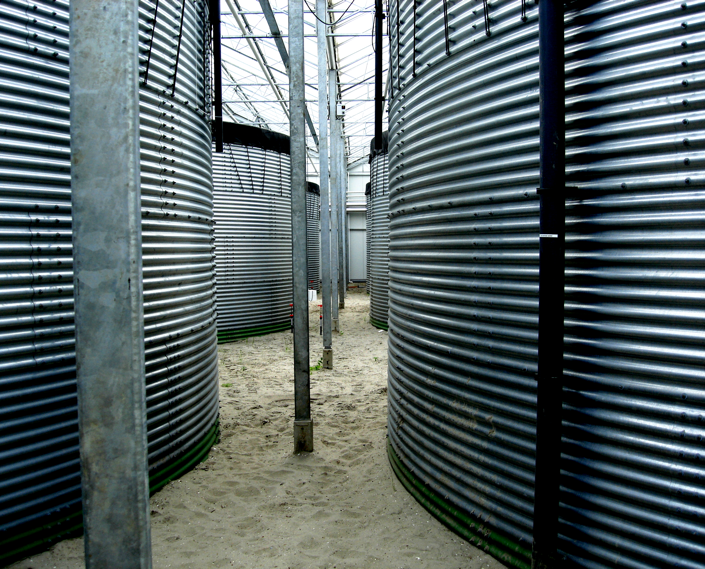
In industrial greenhouses, the irrigation areas are quite extensive, and as such, they are divided into distinct sections that can be irrigated separately. Each irrigation section is remotely managed for 'open-close' operations through electromagnetic valves, following signals from the main computer.
The nutrient solution is delivered to the plants through irrigation lines and drippers. The most effective drippers in this system are compensated drippers.
When compensated drippers are used, the watering of plants is consistently distributed across the entire length of the bed, regardless of its size.
The capacity of drippers can vary, with the most common rates being 2 liters per hour and 3 liters per hour per plant.
At the tip of the dripper, a PVC needle is included, enabling the dripper to be inserted into the substrate.
Ebb and flow system
This irrigation method is used for cultivation on hydroponic tables and concrete surfaces. The idea is to briefly flood the tables or concrete with water, allowing the plants to absorb what they need. Afterward, the excess water is channeled into the drainage system.
In this method, plants are set on trays, within pots, or directly on shelving filled with substrate. The nutrient solution is channeled from the bottom, evenly saturating the plastic shelves, much like a "tidal wave".
After a specific period, any residual nutrient solution is drained away. That's why this system is referred to as ‹‹ebb and flow››.
Given that we typically use retractable hydroponic tables, this system has also been dubbed "flooding tables." So, if you hear terms like "flooding," "ebb and flow," or "flooding tables," know that they all refer to the same system.
Water is supplied for flooding by a submersible pump connected to a timer. When the timer turns the pump off, the water flows back into the container with the nutrient solution.
The system for storing and mixing fertilizers is identical to the one used in drip irrigation.


Sprinkling can be used as an irrigation method for different crops and cultivation systems, although it is less prevalent in greenhouses. The primary reasons for this are as follows:
In this form of irrigation, a closed-cycle system is not used, leading to the loss of approximately 30-40% of unused water into the soil and drainage.
he chance of diseases occurring is higher when large droplets land on the leaves of mature plants.
We recommend using overhead irrigation primarily for its most effective purpose: irrigating young seedlings placed on tables, unless the plants are grown in the ground.
>"Closed-cycle" system
A "closed-cycle" system implies that any unabsorbed water from the plants is gathered, treated, and then recycled.
It should be highlighted that the closed-cycle system isn't frequently adopted in agricultural greenhouses because it demands a significant upfront investment. In most scenarios, the drainage water is channeled into the sewer system. Yet, there's the option to recycle and reuse this water if one chooses to.
Following the closed-cycle method, the watering solution that plants don't absorb (known as drainage) travels via underground drainage pipes to a passive drainage collector. It then moves to a drainage storage pit inside the greenhouse. Subsequently, this drainage is channeled to a reservoir designated for unprocessed drainage in the service area.
Within the drip irrigation setup, the drainage gathering system enables the reutilization of 30-40% of the initially provided nutrient solution.
After gathering the drainage, it is subjected to a cleaning and disinfection procedure. Based on the substrate in use and the plants being grown, there are two disinfection methods to consider: heat-based and ultraviolet.
Generally, coconut substrate undergoes thermal disinfection, whereas rockwool is treated with ultraviolet purification.
Thermal disinfection
Thermal disinfection is among the most effective methods for cleaning drainage. It works by heating the drainage water to temperatures between 85-95°C and holding it at this range for up to 180 seconds. Following this, using the recuperation principle, the drainage is cooled to a temperature near its initial level. This extended high-temperature process successfully eliminates 99.9% of harmful bacteria, fungi, and viruses.
The primary method for heating drainage water is through the greenhouse's heating system, rendering the disinfection procedure highly economical. If the desired water temperature isn't reached, an independent electric heater can be fitted to the disinfection device. This heater can either collaborate with the main heating system to offer the needed temperature increment or function autonomously, taking over the entire heating function.
One of the disadvantages of this system is that the elevated temperature fully purifies the water, stripping it of fertilizers. Financially, this translates to a potential loss of 10-15% savings on yearly fertilizer expenses.
Ultraviolet disinfection
Ultraviolet disinfection (often termed "UV disinfection") eliminates all microorganisms in the irrigation water, including fungi, bacteria, and viruses, by breaking down their DNA. For this process, the drainage water flows through a specific lamp that emits UV radiation.
The UV exposure chamber comes with a purification system and a sensor to monitor the intensity of the radiation. This setup guarantees efficient performance and comprehensive water disinfection against bacteria, fungi, and viruses.
UV disinfection greatly boosts the effectiveness of combating diseases, ensures more prudent water usage, and adheres to the ever-tightening hygiene standards for food products. Crucially, it offers a potential reduction of 10-15% in fertilizer costs each year.
Once purified, the disinfected drainage is seamlessly blended with fresh water. From there, it's channeled into a mixer before being redirected to the plants. A portion of the nutrient solution gets taken up, and the remainder drains off. The process is cyclical, hence it's termed a "closed-cycle" system.
We've covered greenhouse irrigation: the technologies used for watering, what a "closed-cycle" system is, and which hydroponic systems employ it. We hope this information assists you in making an informed decision.
We're here to help you
and find the right solution
CONTACT NOW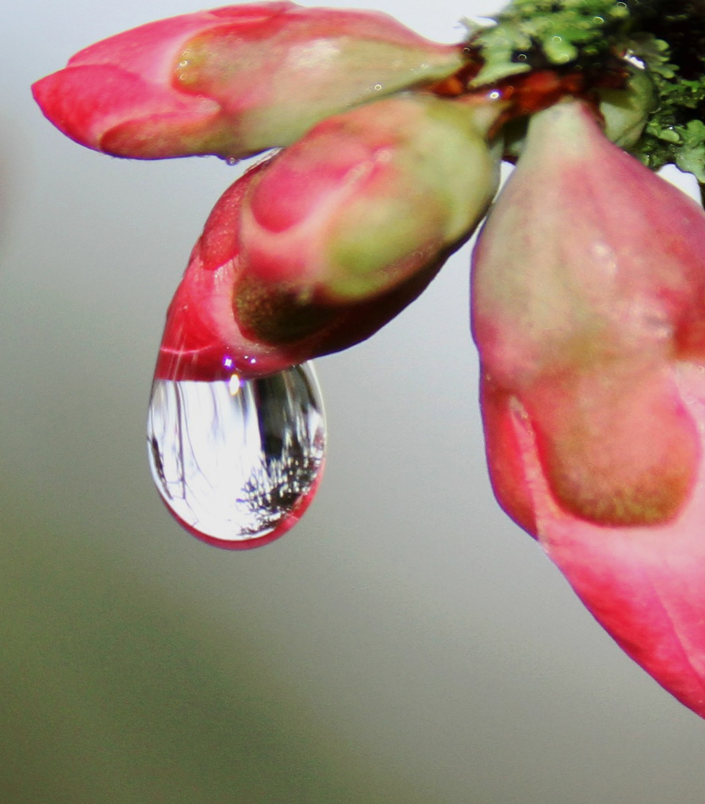
WATERING CAN BE DONE MANUALLY OR AUTOMATICALLY WITH A TIMER
Automatic watering via a timer can be efficiently executed through the drip irrigation method. This technique is particularly suitable for growing vegetables, berries, flowers, and all types of crops cultivated in substrates or pots. It's an exceptionally versatile system that primarily ensures each plant receives the necessary amount of water.
The system comprises a reservoir for the irrigation water, tubing, drippers, and a dosing device with a timer that automatically administers watering according to your preset configurations.
